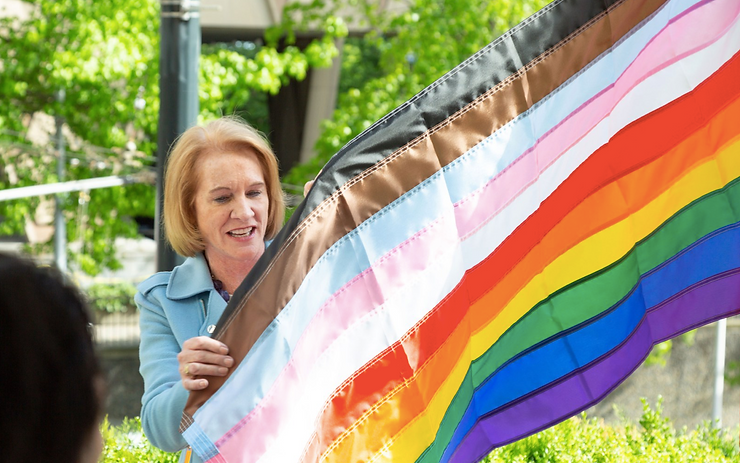The pride flag is a symbol of the LGBTQ community. In this article, we’ll look at how the LGBTQ flag came to be— the history of the LGBTQ flag.

You’ve seen it in pride parades, in the homes of LGBTQ members or supporters, gay parties, gay clubs and bars, and on T-Shirts and clothing items— the LGBTQ flag or what is otherwise known as the rainbow pride flag.
To understand the pride flag’s history, we are going way back to the second world war with the Pink Triangle. Like the Jewish Star of David, the triangle is used to mark LGBTQ prisoners in concentration camps. Then, the triangle’s meaning evolved.
Long after the war, the LGBTQ rights movement adopted the triangle as a symbol of pride— hence, the pride flag emerged from the thought.
But in 1978, Harvey Milk stepped in. A San Francisco City councilman, he was the first openly gay elected official. Milk wanted a symbol that didn’t have a traumatizing past that could be welcome to all members of the community. He then appointed Gilbert Baker who was an artist, army veteran, and drag queen to paint the very first rainbow pride flag. People would later call Baker the Gay Betsy Ross.
Baker picked the rainbow because he wanted to symbolize the LGBTQ diversity in races, gender expression, and age. Baker’s flag consists of eight stripes: Hot pink for sex, Red for life, Orange for healing, Yellow for sunlight, Green for nature, Turquoise for magic/art, Indigo for serenity and harmony, and violet for spirit.
Those were the elements that the artist Gilbert Baker believed were present in all people. This flag debuted on June 25, 1978, in the San Francisco Gay Freedom Parade.

In 1979, pink was somewhat removed because of the scarcity of the fabric, and similar production issues led to dropping turquoise and replacing indigo color with a more basic blue leaving the more traditional six stripes.
In 1994, the rainbow became a more established symbol of LGBTQ+ pride when Baker constructed a mile-long version of the flag for the 25th anniversary of the Stonewall Riots.
In 2017, Baker added a Lavender stripe to the top of his original flag, symbolizing diversity and bringing the total to nine stripes. Since Baker passed away in 2017, this was his last contribution to the pride flag.
Later in 2017, the city of Philadelphia added black and brown stripes to the classic six, representing people of color or the LGBTQ community.

In 2018, the city of Seattle incorporated pale blue, pink, and white into the pride flag, from the transgender flag created by Monica Helms to represent the transgender community. That same year, Daniel Quasar combined and reshaped the Philadelphia and Seattle flags to focus on moving forward in his design called the “The Progress Flag”.






